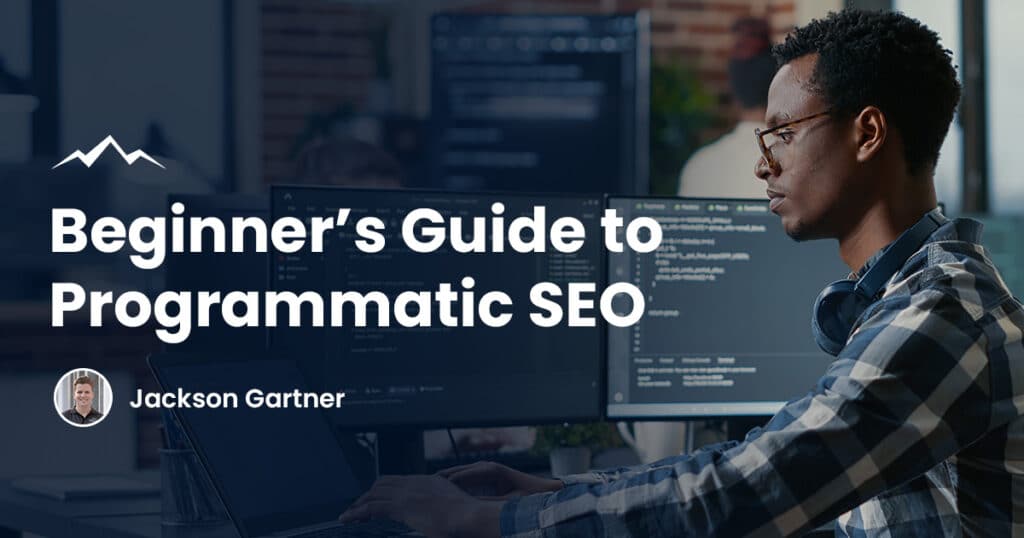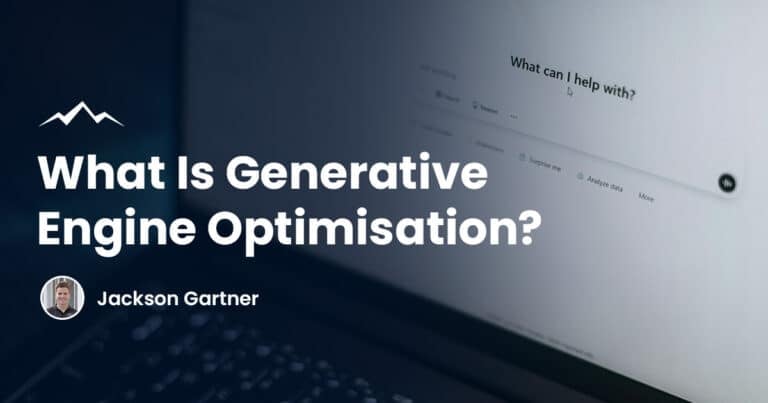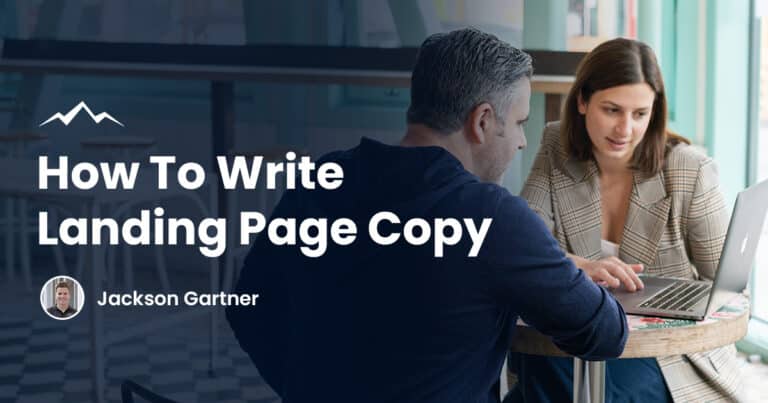Programmatic SEO (pSEO) is a search engine optimisation strategy that is designed to help you create thousands of unique landing pages that match your audience’s search intent.
In this blog, we’ll dive into what programmatic SEO is specifically, how it works, why it’s such a successful SEO strategy plus our SEO Brisbane team will provide a real world example of pSEO in action.
If you’re aiming to improve your search rankings and drive more organic traffic, programmatic SEO might be just what you need.
What Is Programmatic SEO (pSEO)?
Programmatic SEO is an approach to search engine optimisation that focuses on automating the creation of landing pages at scale.
Instead of manually crafting each page, you use data and algorithms to generate a large number of programmatically created pages that target specific keywords and match the search intent of your audience.
For example, if your business offers a wide range of services, programmatic SEO allows you to create a separate landing page for each service, targeting specific search terms related to each one.
These programmatic pages are designed to appear in search engine results pages (SERPs) when users search for those terms, driving more search traffic to your site.
The key difference between programmatic SEO and traditional SEO lies in the scalability.
Traditional SEO involves optimising individual web pages or blog posts, which can be time-consuming.
Programmatic SEO on the other hand lets you to create thousands of pages quickly, allowing your site to capture a wide range of exact match and long-tail keywords.
By using specific keyword research tools that we’ll uncover later in this article, you can automate the process of creating landing pages that can attract a large volume search traffic.
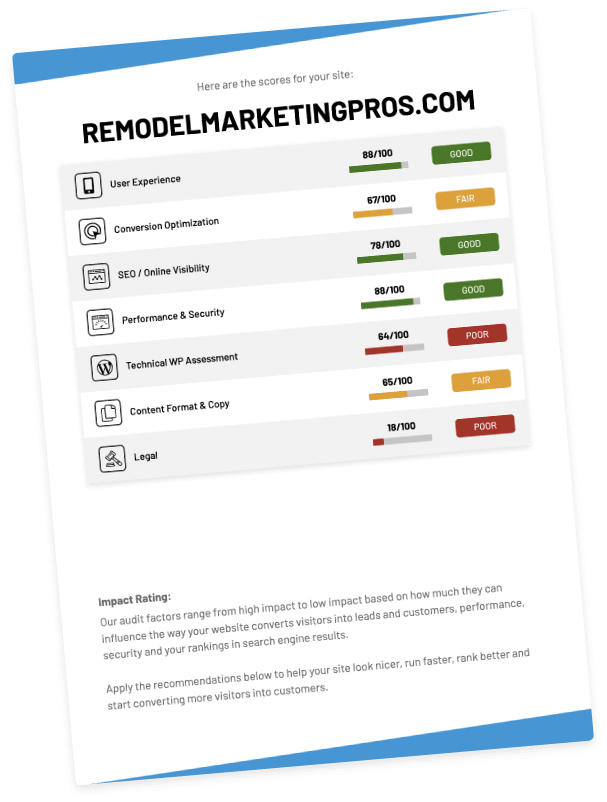
How Programmatic SEO Works
Programmatic SEO leverages automation and data to create landing pages at scale.
At the heart of programmatic SEO is data-driven content creation.
This means using data from sources like Google Trends, keyword research tools and publicly available data to identify specific keywords that your target audience is searching for.
Once these target keywords are identified, you can create programmatically generated pages that are tailored to these search queries.
If you offer multiple products or services, programmatic SEO can help you create comparison landing pages for every possible match-up.
For example, if your eCommerce online store sells the iPhone 13, 14, 15, and 16, you can use pSEO to automatically generate landing pages for each comparison:
- iPhone 13 vs iPhone 14
- iPhone 13 vs iPhone 15
- iPhone 13 vs iPhone 16
- iPhone 14 vs iPhone 15
- iPhone 14 vs iPhone 16
- iPhone 15 vs iPhone 16
This ensures that your site provides the exact information users are searching for, no matter which iPhones they want to compare.
Now, imagine scaling this across a larger product range. With just 20 products, you could create 190 unique landing pages. Expand that to 100 products and you’d generate 4,950 pages.
While each individual search might have low volume, the cumulative effect of capturing all these searches can lead to a significant increase in traffic.
This allows you to cover a broader range of search queries without manually writing each page.
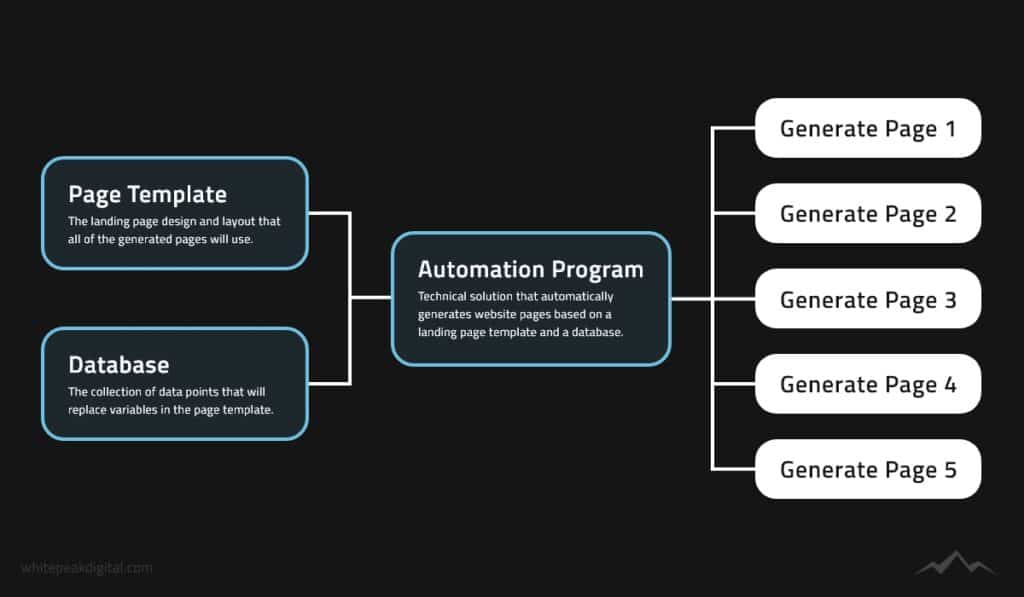
Benefits of Programmatic SEO
Programmatic SEO offers several advantages that can significantly enhance your SEO strategy.
By automating the creation of landing pages, you can efficiently target a wide range of specific keywords and search intents while reducing manual effort.
Scalability
One of the biggest benefits of programmatic SEO is its scalability.
Instead of manually creating individual pages, you can create thousands of programmatically generated pages that target different exact match terms, long-tail keywords and search queries.
This allows your website to cover a broader spectrum of search traffic and increase its visibility in SERPs.
For example, a company offering various software integrations can use programmatic SEO to create individual landing pages for each integration.
Each page would be optimised for a specific search term related to that integration, ensuring that your site appears when users search for it.
Cost-Efficiency
Programmatic SEO is also cost-efficient at scale.
Automating the process of creating landing pages reduces the time and resources needed compared to traditional methods.
With the right setup, you can quickly generate high-quality pages without the need for constant manual input, allowing you to allocate resources elsewhere in your SEO efforts.
Improved SERP Performance
By targeting specific keywords and search intent, programmatic SEO helps improve your site’s performance in search rankings.
The more pages you have optimised for various search terms, the more opportunities you have to rank higher in search results.
This not only drives more organic traffic to your site but also enhances your site’s authority and relevance in the eyes of search engines.

How to Implement Programmatic SEO on Your Website
Implementing programmatic SEO on your website can seem daunting, but with the right approach, you can efficiently scale your content and boost your search engine rankings.
Here’s a step-by-step guide to get you started with pSEO:
1. Identify Your Target Keywords
Start by conducting thorough keyword research to identify the specific keywords you want to target.
Use keyword research tools like Google Trends, Google Search Console or any keyword tool that can help you find head terms and long-tail keywords with sufficient search volume.
Focus on keywords that align with your business offerings and match the search intent of your target audience.
2. Gather & Organise Data
Next, collect the data needed to create your programmatic pages.
This might include product details, service features or any other relevant information that can be used to generate content.
Use Google Sheets or a similar spreadsheet tool to organise this data. This sheet will serve as a template, feeding into the creation of your landing pages.
3. Design Your Page Template
Create a page template that can be used to generate each landing page.
This template should include variable placeholders for the keywords and data points you’ve identified.
Ensure that the template is optimised for SEO, with proper headings, meta tags and internal linking structures.
The template should be flexible enough to accommodate the variations needed for each programmatically created page.
4. Automate Content Creation
Using the data and template you’ve prepared, set up a process to automatically generate these landing pages on your website.
This could involve writing scripts, using APIs or integrating Google Sheets with your content management system.
The goal is to programmatically create unique, SEO-optimised pages at scale, each targeting a specific set of search terms.
5. Monitor & Optimise
After your programmatic SEO pages are live, monitor their performance using tools like Google Search Console or your preferred SEO tools.
Track key metrics like search rankings, organic traffic and user engagement.
Look out for issues like duplicate or thin content and make adjustments as needed to improve the effectiveness of your programmatic SEO strategy.
6. Internal Linking & Integration
Finally, ensure that all your programmatically generated pages are properly integrated into your site’s structure.
Use internal links to connect these pages with other relevant content on your site.
This not only helps with SEO but also improves the user experience by guiding site visitors to the information they’re looking for.
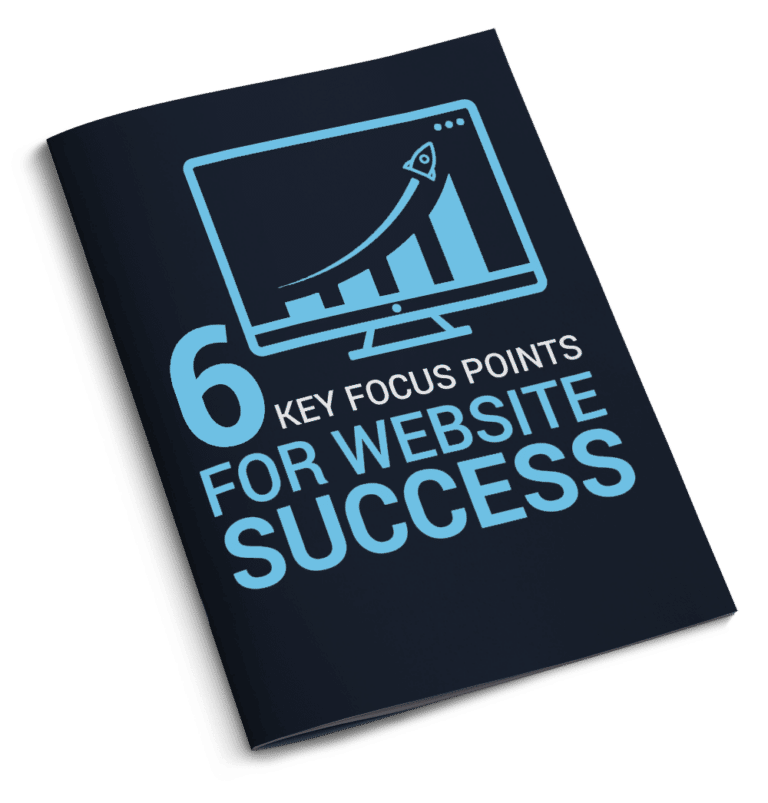
Zapier’s Use of Programmatic SEO
To understand the power of programmatic SEO, let’s look at how Zapier which is an automation tool that uses this pSEO strategy to scale their online organic traffic.
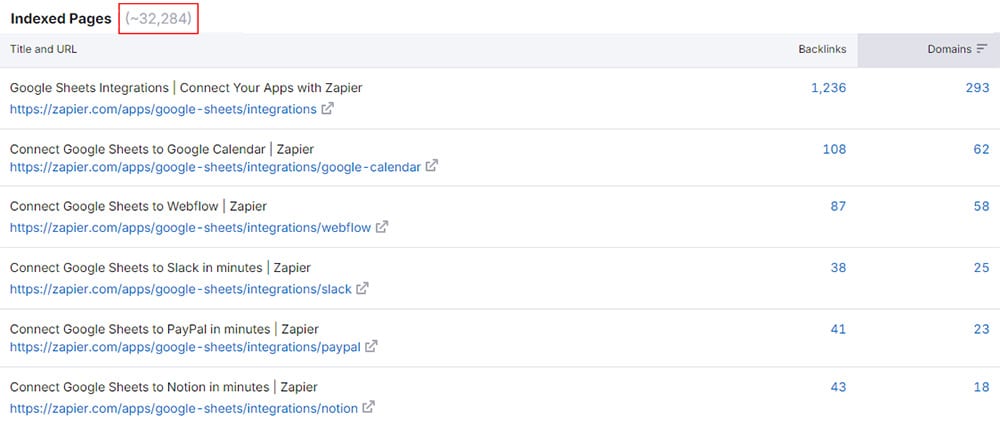
In the above screenshot, Semrush has detected over 32,000 unique landing pages just for Zapier’s Google Sheets integration.
With Zapier offering integrations with over 6,000 unique platforms this would equate to millions of unique landing pages on their website, most generating just a few visitors each month but this has allowed Zapier to scale to millions of monthly organic visitors from Google.
Overview of Zapier’s Approach
Zapier connects apps and automates workflows, offering thousands of potential integrations.
Instead of manually creating a landing page for each integration, Zapier leverages programmatic SEO to generate millions of unique landing pages.
Each page is tailored to a specific integration and search intent, ensuring they capture a wide range of search terms.
How It Works
Zapier’s programmatic SEO strategy involves creating individual landing pages for every possible integration between the apps they support.
For example, if a user searches for “Google Sheets to Slack integration”, Zapier has a dedicated landing page that ranks highly for that specific search query.
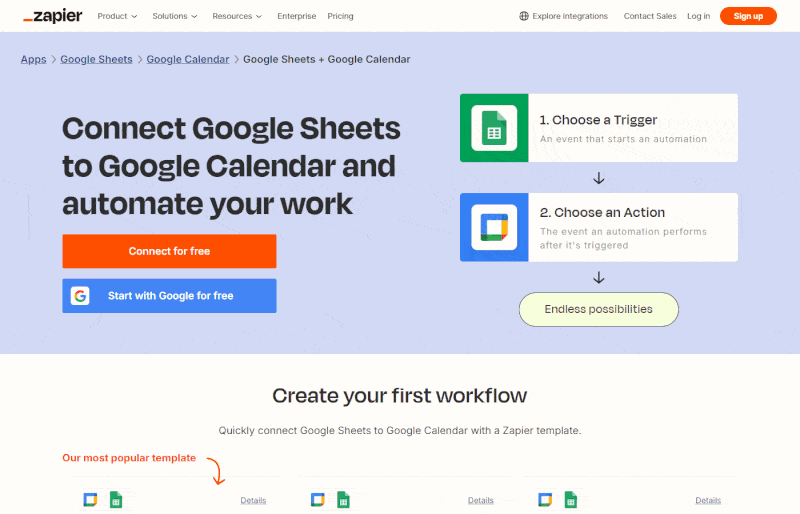
These pages are generated using a combination of publicly available data and keyword research tools to ensure they match what users are looking for.
By focusing on long-tail keywords and specific search queries, Zapier ensures that their programmatically created pages appear in SERPs just when users need them.
This approach not only drives significant search traffic to their site but also positions them as a go-to resource for app integrations.
Results
The results of Zapier’s approach are clear. By using programmatic SEO, they have significantly increased their monthly organic traffic from thousands to millions in a few short years.
Their ability to provide relevant, targeted content at scale has made them a leader in the automation space, drawing in users exactly when they’re searching for the services Zapier offers.
Key Takeaway
Zapier’s success with programmatic SEO demonstrates how businesses can effectively use this pSEO strategy to create valuable content at scale, targeting specific keywords and search intents.
By automating the process of building landing pages, companies can dominate search engine results for a wide range of search terms, driving more traffic and ultimately, more conversions.
pSEO Challenges & Considerations
While programmatic SEO offers numerous benefits, it also comes with its own set of challenges.
Understanding these potential pitfalls can help you implement a more effective and sustainable programmatic SEO strategy.
Quality Control
One of the primary risks with programmatically generated pages is the potential for thin content or duplicate content.
Since the process relies heavily on automation, there’s a chance that some pages might not meet the quality standards expected by users or search engines.
This can lead to penalties from search engines, negatively affecting your search rankings.
To avoid this, regularly review the content being generated to ensure it provides value to your audience.
Incorporate unique, relevant data wherever possible and avoid creating pages that are overly similar or repetitive.
Technical Expertise Required
Implementing programmatic SEO effectively demands a certain level of technical expertise.
The process involves setting up data sources, designing page templates and integrating automation tools which can be complex.
If your business lacks in-house technical skills, you may need to invest in training or consider hiring external help.
For professional support, you can explore our web design services, where we offer tailored solutions to meet your needs.
Monitoring and Maintenance
Once your programmatically created pages are live, ongoing monitoring is essential.
Search engine algorithms and user behaviours change over time, which means your pages may need to be updated or refined.
Regularly check performance metrics through tools like Google Analytics or Google Search Console to ensure your pages continue to perform well.
Be prepared to make adjustments as needed, such as updating landing page templates or refining keyword strategies.
Avoiding the “Doorway Pages” Trap
One common mistake in programmatic SEO is inadvertently creating doorway pages which are pages designed solely to rank in search engines without providing real value to users.
These pages often offer little content and are focused only on driving traffic. Search engines, particularly Google, penalise sites that rely on doorway pages.
To avoid this, ensure that every programmatic page you create serves a genuine purpose and offers valuable content that matches the user intent behind the search term.

Is Programmatic SEO Right for Your Business?
Determining whether programmatic SEO is a good fit for your business depends on several factors.
While this strategy offers substantial benefits, it’s essential to assess whether it aligns with your goals, resources and the nature of your business.
Assess Your Content Needs
If your business offers a wide range of products or services, especially those with various features or specifications, programmatic SEO could be highly beneficial.
However, if your offerings are limited, the need for such a scale of content may be less pressing.
Consider Your Resources
Successful implementation of programmatic pages requires time, expertise and sometimes significant upfront investment.
You’ll need to ensure you have the technical skills or support to set up and maintain the automated systems necessary for generating and optimising programmatically created pages.
If these resources are limited, you may need to weigh the potential website ROI against the effort required.
Evaluate Your SEO Goals
If your primary goal is to dominate search results for a wide range of specific keywords, programmatic SEO can be a powerful tool.
It’s particularly effective for businesses aiming to capture traffic from long-tail keywords and niche search queries.
However, if your focus is more on brand-building or content that requires a high level of customisation, traditional SEO strategies might be more appropriate.
Look at Industry Examples
Consider whether your competitors or industry leaders are using programmatic SEO.
For instance, as we discussed earlier, companies like Zapier have successfully implemented this strategy to create landing pages at scale, driving significant traffic and improving their search rankings.
If similar businesses are benefiting from programmatic SEO, it could be a strong indication that it would work well for you too.
Final Thoughts
Programmatic SEO offers a powerful way to scale your search engine optimisation efforts, allowing you to target a vast array of specific keywords and search intents with minimal manual effort.
By automating the creation of landing pages and leveraging data to tailor content to your audience’s needs, you can significantly boost your search rankings and drive more organic traffic to your site.
However, like any SEO strategy, programmatic SEO isn’t a one-size-fits-all solution. It requires careful planning, the right tools and ongoing monitoring to ensure success.
Whether you’re a large enterprise looking to cover a broad range of search queries or a growing business aiming to capture niche markets, programmatic SEO can be a valuable addition to your SEO strategy.
Our team of enterprise SEO experts will often implement pSEO strategies into our clients websites to great success.
If you’re considering programmatic SEO and want to ensure it’s done right or if you need help optimising your existing approach, don’t hesitate to reach out to us.
Our team is here to help you navigate the complexities of SEO and achieve the results you’re after.

Frequently Asked Questions
What industries benefit most from programmatic SEO?
Industries with a wide range of products, services or content categories, such as eCommerce, travel and SaaS, benefit greatly from programmatic SEO.
How does programmatic SEO differ from creating doorway pages?
Unlike doorway pages, which are low-quality pages designed solely to manipulate search engine rankings, programmatic SEO focuses on creating valuable, targeted content at scale.
The goal is to meet user needs and search intent rather than just drive traffic.
Can programmatic SEO replace traditional SEO strategies?
No, programmatic SEO should complement rather than replace traditional SEO strategies.
While programmatic SEO is excellent for scaling content, traditional SEO is still essential for crafting high-quality, in-depth content and maintaining overall site health.
What are the best tools for a successful programmatic SEO strategy?
Some of the most effective tools include Google Sheets for data management, keyword research tools like Semrush and Ahrefs and CMS platforms that support API integration for automating content creation.
Is programmatic SEO suitable for small businesses?
Programmatic SEO can be effective for small businesses, particularly those looking to scale quickly or target niche markets with specific search terms.
However, it requires resources and technical expertise, so small businesses should evaluate their capacity to implement and maintain it effectively.
How do I ensure quality control in programmatic SEO?
Regularly review your programmatically generated pages to avoid issues like thin content and duplicate content.
Use data-driven insights to ensure each page provides value to users and aligns with search intent.
How long does it take to see results from programmatic SEO?
Results from programmatic SEO can vary, but businesses often start seeing improvements in search rankings and organic traffic within a few months.
Continuous optimisation and monitoring are key to maintaining and enhancing these results over time.
To your success,
Jackson
